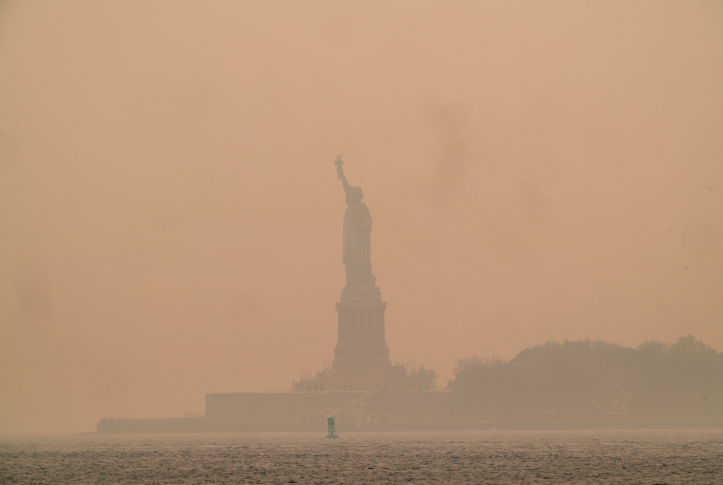When smoke from the Canadian wildfires created a hazardous gray haze over much of the Eastern United States in early June, it made climate change clear — people could see, feel, smell, and breathe it. California and other Western states have experienced wildfire fallout for years, but images of the Statue of Liberty shrouded in smoke made the crisis tangible in a new way.
During a wildfire, the harm is visible. Day-to-day, much of the damage wrought by climate change is not so apparent, but it’s there. A portion of the invisible greenhouse gases that are harming our planet come from an unlikely source: 8.5 percent of total U.S. emissions come from the health care sector. There is growing awareness of this impact, but action is lagging. We need policies, practice, research, and measurement that can accelerate decarbonization of the health system.
The Biden administration has established a Health Sector Climate Pledge; about 15 percent of U.S. health systems have signed on. Signatories commit to a 50 percent reduction in greenhouse gas emissions by 2030 and net-zero emissions by 2050. In addition, they commit to publicly reporting their progress each year, which gives it more teeth than a typical voluntary pledge.
Some steps hospitals are taking are not unique to health care: composting food waste generated in health systems, serving more plant-based meals, switching to energy-efficient light bulbs, moving to electric vehicles, using native plants in landscaping, and relying more on renewable energy.
But there’s another layer of decarbonization necessary that is embedded in clinical practices. That includes switching from greenhouse-emitting anesthetic gases to earth-friendly ones, which are just as safe and often less costly, according to the American Society of Anesthesiologists, and moving to dry-powder inhalers to treat asthma, instead of metered-dose inhalers, which emit greenhouse gases. Another crucial and challenging area involves revamping the health care supply chain. This includes rethinking single-use products, like a pair of scissors that may be unwrapped but never used or used in a sterile way that doesn’t touch a patient, but then disposed of immediately. These items — which amounts to tons of products, plus packaging — end up in landfills and incinerators.
The call for change is growing, partly because health care providers are seeing and treating harm resulting from climate change, including from heat domes, smoke, floods, and power failures. The impact is inequitable; poor people and minorities suffer more. During the recent Canadian fires, many people could stay indoors until the air cleared. But, as in the pandemic, some workers — including anyone who had to go outside in order to get paid — could not.
The growing awareness is propelling change at some health systems. In some cases, a green-friendly reputation could be a recruitment lure in an era of provider shortages. But most health systems are not yet deeply engaged with becoming greener. Regulation at the federal or state level could help. Climate action could get folded into various other payment and accreditation metrics, such as recent efforts by the Joint Commission. But even if new rules and regulations aren’t imposed, the prospect of new requirements could prompt health systems to step up action. Taking steps on their own, ahead of requirements, would give health systems more flexibility to chart their own path.
Finally, climate action may accelerate if health systems are presented with evidence that it’s smart for business. The message from hospitals that have started down this path is encouraging. First steps can be daunting, but once health systems embark on a greener path, it becomes second nature.




